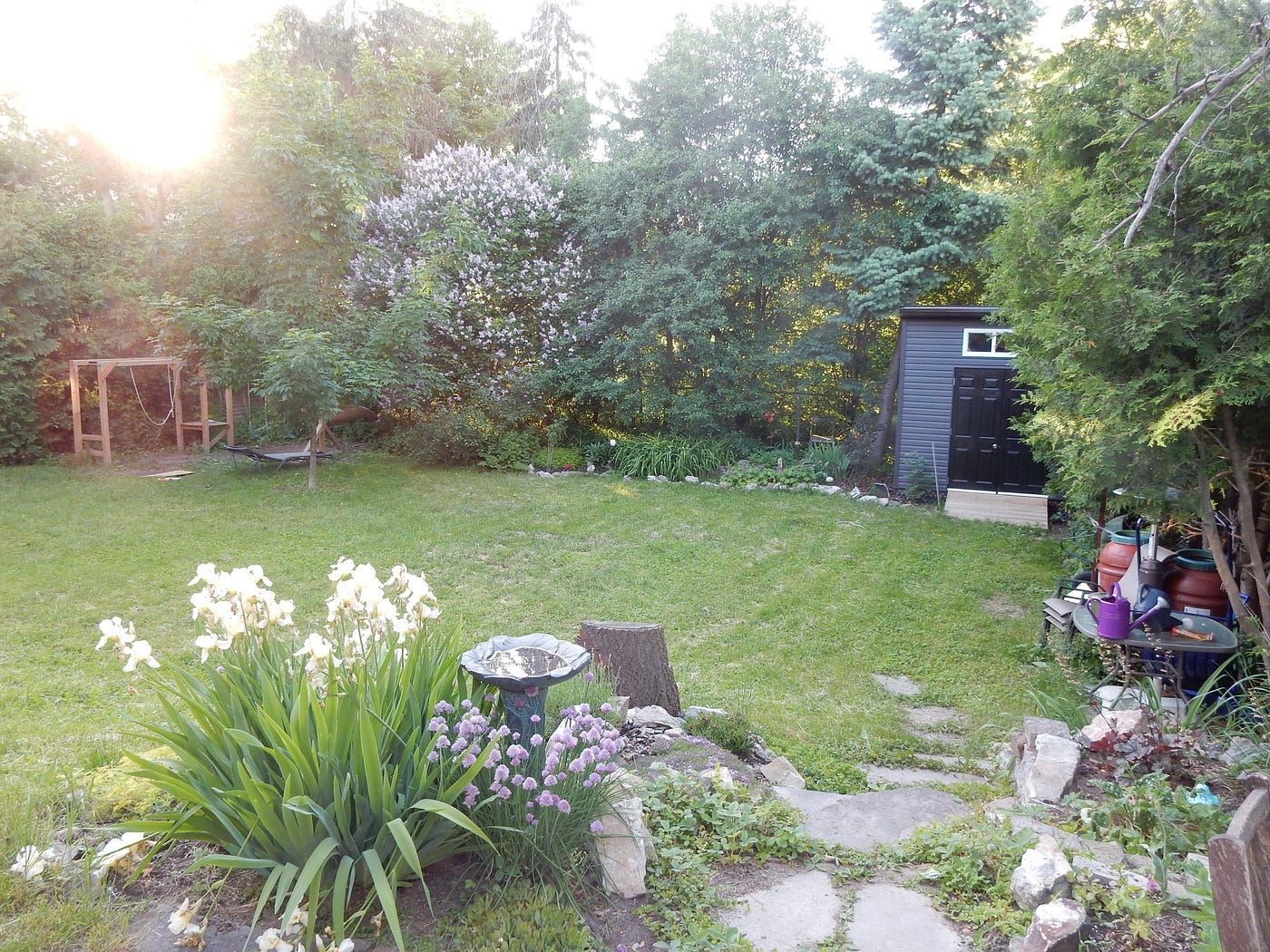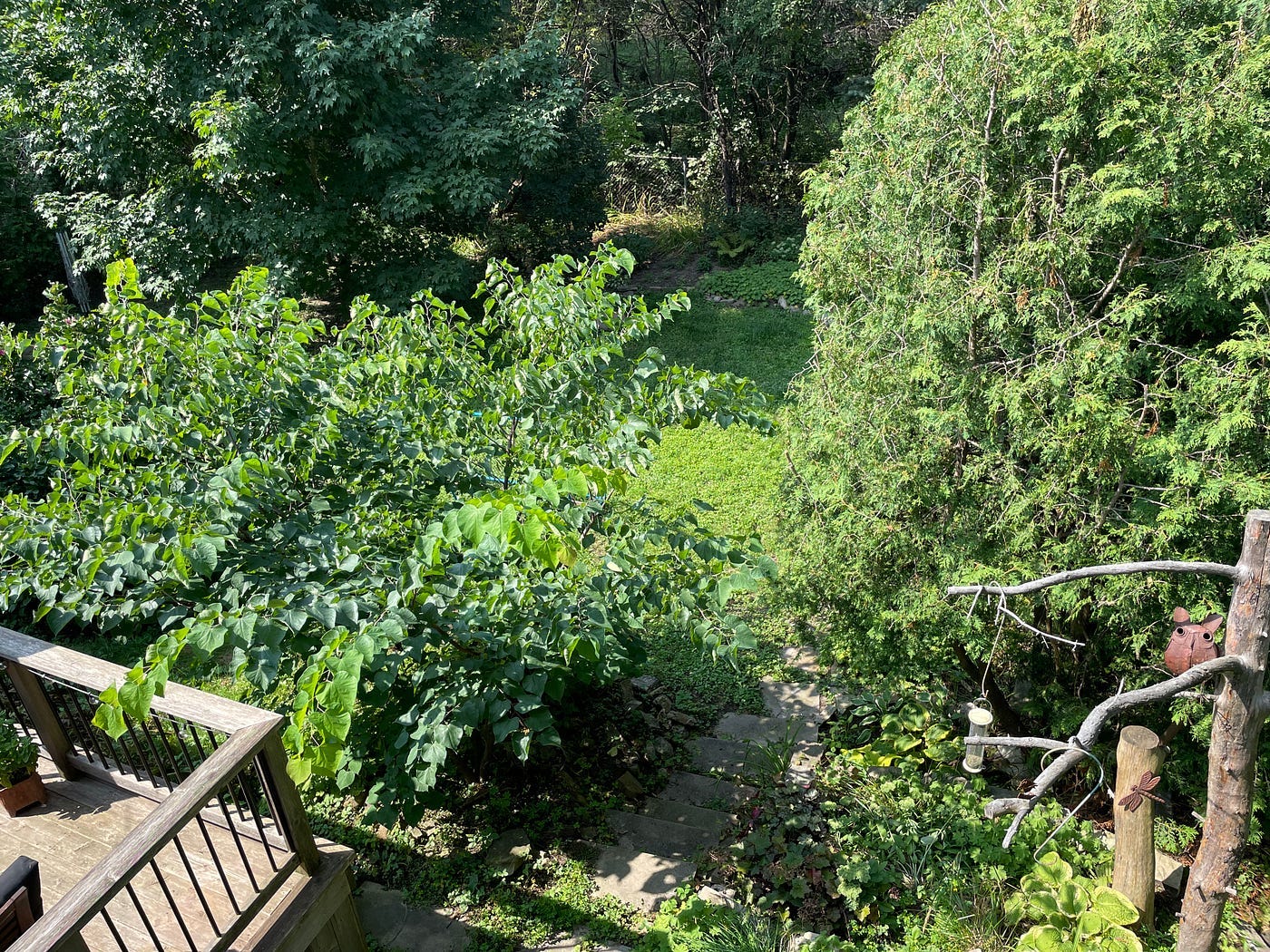What Happens When We Can’t Go Outside and Play?
The Quiet Death of Boredom’s Greatest Rival—Our Backyards
“I’m bored!”
There are few universal expressions that cross all human cultures, but I’m pretty sure this is one of them. Children have been complaining of boredom to their parents for hundreds of years. For much of that time, the go-to answer from most parents has been some combination of “do more chores” or “go outside and play.” More recently, however, these tried and true responses are being replaced by the siren song of screen time. Is this just a result of humanity’s love affair with technology, or have larger homes and convenience-based lifestyles eroded all other options?
When we decided to buy our home, we joked that the only parts of the house that we remembered from the tour were the basement and the backyard. After looking at over 30 houses, we had become a little obsessed over whether a place had a solid foundation, so the basement made some sense. It was the backyard that had won over our hearts though.
It was a beautiful September day when we first viewed the house, and, with no fencing separating the two sides of the semi-detached units, the shared backyard space was a glorious expanse of grass, wildlife and children’s play equipment (Our soon-to-be neighbours had small children of similar ages to us). Garden boxes were planted with vegetables. Goldfinches were coming to feeders. Children were climbing on wooden structures. This was the place for us. If we were looking for a newer house though (Our place was built in the 1950s), the options available would likely not have melted our hearts.
Maybe we look for different things in a home than the average person (although I have my doubts), but builders seem to think that backyards are no longer a top selling feature. Increasing urban density and land prices, combined with a cultural preference for larger homes with more indoor living space, have resulted in backyards becoming smaller with every new-build. As houses expand on ever smaller lots, backyards are being sacrificed at the altar of indoor comfort. Yoga spaces, media rooms and home offices are taking the place of fenced-off outdoor areas as the de facto retreats from the higher usage parts of a house. Where people used to leave the home to exercise, watch movies and work in the company of others, and backyards provided a private space to enjoy nature at their leisure, these preferences have now switched. Once social activities have become private affairs, and the enjoyment of nature, if someone still thinks to do so, requires travelling to a public park or play area.
Of course, this only concerns those of us fortunate enough to own a house in the first place. Smaller dwellings, like apartments, condos and townhouses, replaced backyards with balconies and shared courtyards long ago for the sake of affordability. The high cost of housing has reached crisis levels in many areas, requiring people to adjust expectations and make tough choices as to where and how they will live. It is one thing to make a conscious choice based on the options available to you. It feels different when the choice is taken away from you completely.
Boredom researchers (it’s a thing) Dr. James Danckert and Dr. John Eastwood describe boredom as “the uncomfortable feeling of wanting to engage in satisfying activity but being unable to do so.” According to this definition, boredom is not about lacking something to do, but rather lacking a feeling of satisfaction over the options available. The reduction of outdoor spaces like backyards is removing many of the options that have traditionally been available to help vanquish boredom, and replacing them with temperature-controlled isolation chambers where we suppress our boredom through the dopamine hits from phone scrolling and video games. Maybe some people find satisfaction in these technological options, but many of us feel like something is missing.
Boredom plays an important role in society. From an evolutionary perspective, a species that gets bored may have an advantage over other species that are content with a more repetitive status quo. Getting bored encourages you to seek out new experiences like checking out whether that mushroom is edible or heading across that river to see what’s on the other side. Sure there may be some mishaps along the way, but it only takes a few successes to benefit the species as a whole. We may be making great boredom-inspired advances in the digital world these days, from cyber-espionage to artificial intelligence, but we are moving further away from our connection with the natural world.
Having grown up before the rise of smart phones and the Internet, I have had the pleasure of being bored for a significant portion of my life. It might not feel like a pleasure when you are in the midst of it, but in retrospect I find being bored often leads to new and interesting endeavours. Picking up a new book. Starting a new project. Figuring out the answer to a lingering problem. As a child, the solution to my boredom often involved going outside and making use of a backyard. Playing baseball or Prisoner (aka Manhunt) with kids on the street. Having crabapple fights. Climbing a tree. Before I saw them as ecosystems teaming with life, backyards were the safe havens away from parental supervision where memories and friendships were made. As backyards disappear from the urban landscape, the ecological and social services that they provide are disappearing with them.
How a backyard is used evolves over a family’s lifetime. When kids are small, they are safe havens for parents and children alike. Small features seem huge in the eyes of a child, and a sandbox, tree stump and flower garden may take on outsized importance as truck stops, thrones and hiding spots in their imaginations. Equally as important, the knowledge that their children can safely explore within the controlled confines of a private space provides parents with both enormous relief and greater flexibility to manage household tasks unencumbered by a child’s boredom.
As the kids grow up, a backyard might go through several iterations. Swimming pool, trampoline park, jungle gym, vegetable garden, badminton court, fire pit, campground, sliding hill, dog run, graduation ceremony…the list goes on. Once kids are no longer the main consideration, a backyard might transform into a social space to host BBQs and cocktail parties, or maybe a back-to-nature refuge for gardeners, birders and moth enthusiasts. Through it all, it will provide a host of ecosystem services that will likely go unheralded, from stormwater management to shady temperature control to wildlife habitat. While fences and hedgerows allow us to imagine our backyards are private sanctuaries hived off from the surrounding neighbourhood, your non-human neighbours see them for what they truly are: a core component of the interconnected yards, paths and green spaces that make up the urban ecosystem. So what happens when they no longer exist?
Even with a backyard, I still get stuck in the dopamine trap of staring at my phone. I recognize my addiction, and I’m working on it. In the meantime, I’m trying to use my phone as a gateway back to the natural world. Using apps like iNaturalist and Merlin has opened my eyes to the flora, fauna and funga around me, helping to get me out of my house and back into nature. As my brain gets calibrated to recognize patterns in leaf shapes and bird calls as readily as I recall emojis and ringtones, I find that my phone stays in my pocket for longer periods of time as I am out on walks or puttering around the yard. Learning about the diversity in my backyard has started me on a journey of discovery, and while I still may have my phone with me as a tether to the virtual world, I have left boredom behind at home.





